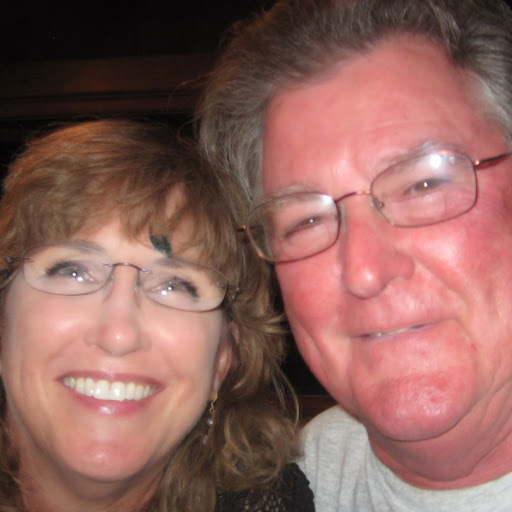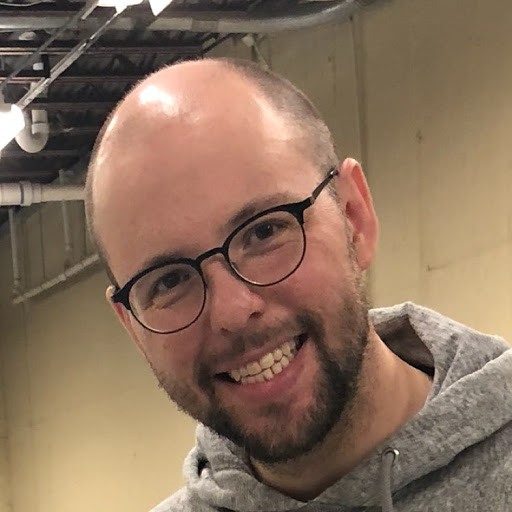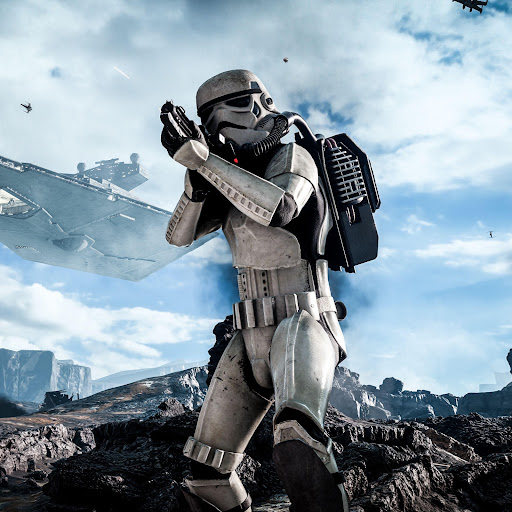Jeffrey Daniel Potter
age ~70
from Winter Springs, FL
- Also known as:
-
- Jeffrey D Potter
- Jeffrey Dani Potter
- Jeffrey L Potter
- Jeff D Potter
- Jeffery D Potter
Jeffrey Potter Phones & Addresses
- Winter Springs, FL
- Ormond Beach, FL
- Port Orange, FL
- Huntsville, TX
- Orlando, FL
- Winter Spgs, FL
Work
-
Company:Howd & Ludorf, LLC
-
Address:
Specialities
Municipal Law • Civil Rights • Insurance Defense • Insurance Coverage • Litigation • Appeals
Lawyers & Attorneys

Jeffrey Potter - Lawyer
view sourceOffice:
Howd & Ludorf, LLC
Specialties:
Municipal Law
Civil Rights
Insurance Defense
Insurance Coverage
Litigation
Appeals
Civil Rights
Insurance Defense
Insurance Coverage
Litigation
Appeals
ISLN:
917914896
Admitted:
2004
University:
Central Connecticut State University, B.A., 1998
Law School:
University of Connecticut, J.D., 2004
License Records
Jeffrey Scott Potter
License #:
34469 - Expired
Category:
Nursing Support
Issued Date:
Aug 16, 1996
Effective Date:
Sep 4, 1999
Type:
Nurse Aide
Jeffrey Carl Potter
License #:
RN56592 - Active
Category:
Nursing
Issued Date:
Oct 21, 2016
Expiration Date:
Mar 1, 2018
Type:
Registered Nurse
Jeffrey Potter
License #:
MD11955 - Active
Category:
Physician
Issued Date:
Oct 12, 2005
Expiration Date:
Jun 30, 2018
Type:
Allopathic Physician (MD)
Jeffrey Neal Potter
License #:
MT001476T - Expired
Category:
Medicine
Type:
Graduate Medical Trainee
Name / Title
Company / Classification
Phones & Addresses
manager
SA&J Group, LLC
REAL ESTATE
REAL ESTATE
FUSION CAFE INC
POTTER DEVELOPMENT CORP
LUCAS TECHNOLOGY HOLDINGS, LLC
TECHWORKS CAPITAL LIMITED
Director
Finish First, Inc
5232 Maui Ln, Orlando, FL 32812
Isbn (Books And Publications)



To a Violent Grave: An Oral Biography of Jackson Pollock
view sourceAuthor
Jeffrey Potter
ISBN #
0916366472

Resumes

Legal Con. At Cn Legal
view sourcePosition:
legal con. at CN Legal (Self-employed)
Location:
United States
Industry:
Legal Services
Work:
CN Legal
legal con.
legal con.

Jeffrey Potter
view source
Jeffrey Potter
view source
Office Manager At Allied Insurance Brokers
view sourcePosition:
Office Manager at Allied Insurance Brokers
Location:
Virgin Islands (British)
Industry:
Insurance
Work:
Allied Insurance Brokers
Office Manager
Office Manager

Business Development Executive - Sr. Recruiter
view sourceLocation:
North Kingstown, Rhode Island
Industry:
Staffing and Recruiting
Work:
The Judge Group - New England Feb 2008 - Jun 2013
Vice President - New England / IT and Engineering
Judge Technical Services Jun 1999 - Dec 2007
Sr. Technical Recruiter
Vice President - New England / IT and Engineering
Judge Technical Services Jun 1999 - Dec 2007
Sr. Technical Recruiter
Education:
Wentworth Institute of Technology 1988 - 1992
Cranston High School West 1980 - 1984
Cranston High School West 1980 - 1984
Skills:
Recruiting
Information Technology
Consulting
Finance
Professional Services
Account Management
Sales Management
Social Networking
Information Technology
Consulting
Finance
Professional Services
Account Management
Sales Management
Social Networking

Jeffrey Potter
view sourceLocation:
United States

Clinical Assistant Professor At University Of Virginia
view sourcePosition:
Clinical Assistant Professor at University of Virginia
Location:
Charlottesville, Virginia
Industry:
Medical Practice
Work:
University of Virginia - Charlottesville, Virginia Area since Jul 2013
Clinical Assistant Professor
New York University 2011 - 2013
Rheumatology Fellow
United Medical Center 2010 - 2011
Hospitalist
Howard University Hospital 2007 - 2010
Physician
National Institutes of Health - Bethesda 2006 - 2007
Intramural Research Trainee
Clinical Assistant Professor
New York University 2011 - 2013
Rheumatology Fellow
United Medical Center 2010 - 2011
Hospitalist
Howard University Hospital 2007 - 2010
Physician
National Institutes of Health - Bethesda 2006 - 2007
Intramural Research Trainee
Education:
Howard University 2001 - 2006
Doctor of Medicine (MD), Medicine Columbia University in the City of New York 1996 - 2000
BA, Art History
Doctor of Medicine (MD), Medicine Columbia University in the City of New York 1996 - 2000
BA, Art History
Medicine Doctors

Jeffrey N. Potter
view sourceSpecialties:
Family Medicine
Work:
Hattiesburg Clinic PAHattiesburg Clinic
415 S 28 Ave STE B, Hattiesburg, MS 39401
(601)2646000 (phone), (601)2685851 (fax)
415 S 28 Ave STE B, Hattiesburg, MS 39401
(601)2646000 (phone), (601)2685851 (fax)
Education:
Medical School
Thomas Jefferson University, Jefferson Medical College
Graduated: 1979
Thomas Jefferson University, Jefferson Medical College
Graduated: 1979
Procedures:
Arthrocentesis
Destruction of Benign/Premalignant Skin Lesions
Electrocardiogram (EKG or ECG)
Skin Tags Removal
Vaccine Administration
Destruction of Benign/Premalignant Skin Lesions
Electrocardiogram (EKG or ECG)
Skin Tags Removal
Vaccine Administration
Conditions:
Acute Bronchitis
Acute Sinusitis
Attention Deficit Disorder (ADD)
Bronchial Asthma
Contact Dermatitis
Acute Sinusitis
Attention Deficit Disorder (ADD)
Bronchial Asthma
Contact Dermatitis
Languages:
Chinese
English
French
German
Spanish
English
French
German
Spanish
Description:
Dr. Potter graduated from the Thomas Jefferson University, Jefferson Medical College in 1979. He works in Hattiesburg, MS and specializes in Family Medicine. Dr. Potter is affiliated with Forrest General Hospital.

Jeffrey A. Potter
view sourceSpecialties:
Rheumatology
Work:
Rheumatology Clinic
415 Ray C Hunt Dr STE 2100, Charlottesville, VA 22903
(434)2430223 (phone), (434)2430239 (fax)
Arthritis/Rheumatism AssociatesArthritis & Rheumatism Associates
18111 Prince Philip Dr STE 323, Olney, MD 20832
(301)9427600 (phone), (301)7741799 (fax)
415 Ray C Hunt Dr STE 2100, Charlottesville, VA 22903
(434)2430223 (phone), (434)2430239 (fax)
Arthritis/Rheumatism AssociatesArthritis & Rheumatism Associates
18111 Prince Philip Dr STE 323, Olney, MD 20832
(301)9427600 (phone), (301)7741799 (fax)
Education:
Medical School
Howard University College of Medicine
Graduated: 2006
Howard University College of Medicine
Graduated: 2006
Conditions:
Ankylosing Spondylitis (AS)
Benign Thyroid Diseases
Diabetes Mellitus (DM)
Gout
Intervertebral Disc Degeneration
Benign Thyroid Diseases
Diabetes Mellitus (DM)
Gout
Intervertebral Disc Degeneration
Languages:
English
Description:
Dr. Potter graduated from the Howard University College of Medicine in 2006. He works in Olney, MD and 1 other location and specializes in Rheumatology.

Jeffrey M. Potter
view sourceSpecialties:
Diagnostic Radiology, Neuroradiology
Work:
Eastern Radiologists Inc
630 E 11 St, Washington, NC 27889
(252)7525000 (phone), (252)7522016 (fax)
Eastern Radiologists Inc
9 Doctors Park, Greenville, NC 27834
(252)7525000 (phone), (252)8303689 (fax)
Eastern Radiologists Inc
2101 W Arlington Blvd STE 210, Greenville, NC 27834
(252)7525000 (phone), (252)7528941 (fax)
630 E 11 St, Washington, NC 27889
(252)7525000 (phone), (252)7522016 (fax)
Eastern Radiologists Inc
9 Doctors Park, Greenville, NC 27834
(252)7525000 (phone), (252)8303689 (fax)
Eastern Radiologists Inc
2101 W Arlington Blvd STE 210, Greenville, NC 27834
(252)7525000 (phone), (252)7528941 (fax)
Education:
Medical School
Tulane University School of Medicine
Graduated: 1998
Tulane University School of Medicine
Graduated: 1998
Languages:
English
Description:
Dr. Potter graduated from the Tulane University School of Medicine in 1998. He works in Washington, NC and 2 other locations and specializes in Diagnostic Radiology and Neuroradiology. Dr. Potter is affiliated with Vidant Beaufort Hospital, Vidant Duplin Hospital, Vidant Edgecombe Hospital, Vidant Medical Center and Vidant Roanoke Chowan Hospital.

Jeffrey Austin Potter
view sourceSpecialties:
Internal Medicine
Rheumatology
Rheumatology
Us Patents
-
Methods And Systems For Rendering Line And Point Features For Display
view source -
US Patent:6433790, Aug 13, 2002
-
Filed:Jan 19, 1999
-
Appl. No.:09/234133
-
Inventors:Ralph Clayton Taylor - Deland FL
Daniel B. Clifton - Rockledge FL
David Gotwalt - Los Gatos CA
Michael A. Mang - Oviedo FL
Thomas A. Piazza - Granite Bay CA
Jeffrey D. Potter - Winter Springs FL -
Assignee:Intel Corporation - Santa Clara CA
-
International Classification:G09G 536
-
US Classification:345611, 345606, 345441
-
Abstract:A method and system for rendering a feature, such as a line, for display on an array of pixels. With this method, the line is identified on the pixel array, the line is expanded into a polygon, and color values are determined for the pixels within the polygon. Also, an antialiasing region is identified in the polygon, and blend values are computed for the pixels in this antialiasing region. Then, the color values determined for the pixels in the antialiasing region are modified as a function of these computed blend values. The pixels in the antialiasing region may then be shown at their modified color values, while the pixels that are in the polygon but not in the antialising region may be shown at their original determined color value. Preferably, the blend values for the pixels in the antialiasing region are calculated as a function of the locations of the pixels in that region. For example, the blend value for each of these pixels may be calculated as a function of four values, each one representing the Manhattan distance from the pixel to a respective one of the edges of the polygon.
-
3-D Rendering Texture Caching Scheme
view source -
US Patent:7050063, May 23, 2006
-
Filed:Feb 11, 2000
-
Appl. No.:09/502994
-
Inventors:Michael Mantor - Orlando FL, US
John Austin Carey - Winter Springs FL, US
Ralph Clayton Taylor - Deland FL, US
Thomas A. Piazza - Granite Bay CA, US
Jeffrey D. Potter - Winter Springs FL, US
Angel E. Socarras - Lake Mary FL, US -
Assignee:Intel Corporation - Santa Clara CA
-
International Classification:G09G 5/00
-
US Classification:345582, 345552, 345557, 345558, 345535, 345564, 345565
-
Abstract:A 3D rendering texture caching scheme that minimizes external bandwidth requirements for texture and increases the rate at which textured pixels are available. The texture caching scheme efficiently pre-fetches data at the main memory access granularity and stores it in cache memory. The data in the main memory and texture cache memory is organized in a manner to achieve large reuse of texels with a minimum of cache memory to minimize cache misses. The texture main memory stores a two dimensional array of texels, each texel having an address and one of N identifiers. The texture cache memory has addresses partitioned into N banks, each bank containing texels transferred from the main memory that have the corresponding identifier. A cache controller determines which texels need to be transferred from the texture main memory to the texture cache memory and which texels are currently in the cache using a least most recently used algorithm. By labeling the texture map blocks (double quad words), a partitioning scheme is developed which allow the cache controller structure to be very modular and easily realized.
-
3-D Rendering Texture Caching Scheme
view source -
US Patent:20060164429, Jul 27, 2006
-
Filed:Jan 30, 2006
-
Appl. No.:11/344030
-
Inventors:Michael Mantor - Orlando FL, US
John Carey - Winter Springs FL, US
Ralph Taylor - Deland FL, US
Thomas Piazza - Granite Bay CA, US
Jeffrey Potter - Winter Springs FL, US
Angel Socarras - Lake Mary FL, US -
International Classification:G09G 5/00
-
US Classification:345582000
-
Abstract:A 3D rendering texture caching scheme that minimizes external bandwidth requirements for texture and increases the rate at which textured pixels are available. The texture caching scheme efficiently pre-fetches data at the main memory access granularity and stores it in cache memory. The data in the main memory and texture cache memory is organized in a manner to achieve large reuse of texels with a minimum of cache memory to minimize cache misses. The texture main memory stores a two dimensional array of texels, each texel having an address and one of N identifiers. The texture cache memory has addresses partitioned into N banks, each bank containing texels transferred from the main memory that have the corresponding identifier. A cache controller determines which texels need to be transferred from the texture main memory to the texture cache memory and which texels are currently in the cache using a least most recently used algorithm. By labeling the texture map blocks (double quad words), a partitioning scheme is developed which allow the cache controller structure to be very modular and easily realized. The texture cache arbiter is used for scheduling and controlling the actual transfer of texels from the texture main memory into the texture cache memory and controlling the outputting of texels for each pixel to an interpolating filter from the cache memory.
-
Method For Resolving Priority Between A Calligraphically-Displayed Point Feature And Both Raster-Displayed Faces And Other Calligraphically-Displayed Point Features In A Cig System
view source -
US Patent:52934675, Mar 8, 1994
-
Filed:Apr 3, 1991
-
Appl. No.:7/679806
-
Inventors:Gregory C. Buchner - South Daytona FL
Jeffrey D. Potter - Port Orange FL
Walter R. Steiner - Ormond Beach FL -
International Classification:G06F 1562
-
US Classification:395122
-
Abstract:A method for determining the proper occulation relationship between a calligraphic point and at least one of another calligraphic point and a surface in a raster image, divides the total image screen into an array of spans, each containing an ordered set of pixels which may be further divided into an array of subpixels; determines which of the subpixels on the total screen lie inside each of the raster surfaces and calligraphic points which must be considered for the image totality; then orders the distance of each of the raster surfaces from the viewing point and also orders the distance of each of the point features from the viewing point; and then compares the ordered distances of each point to at least one of the raster surface distances and other point distances to determine which of subpixels of the point or surface/other point are occluded and which subpixels are visible.
-
Method And Apparatus To Efficiently Interpolate Polygon Attributes In Two Dimensions At A Prescribed Clock Rate
view source -
US Patent:60725052, Jun 6, 2000
-
Filed:Apr 1, 1998
-
Appl. No.:9/053589
-
Inventors:Thomas A. Piazza - Granite Bay CA
R. Scott Hartog - Orlando FL
Michael Mantor - Orlando FL
Jeffrey D. Potter - Winter Springs FL
Ralph Clayton Taylor - Deland FL
Michael A. Mang - Oviedo FL -
Assignee:Real 3D, Inc. - Orlando FL
-
International Classification:G06T 100
G06F 1500 -
US Classification:345501
-
Abstract:A rasterizer comprised of a bounding box calculator, a plane converter, a windower, and incrementers. For each polygon to be processed, a bounding box calculation is performed which determines the display screen area, in spans, that totally encloses the polygon and passes the data to the plane converter. The plane converter also receives as input attribute values for each vertex of the polygon. The plane converter computes planar coefficients for each attribute of the polygon, for each of the edges of the polygon. The plane converter unit computes the start pixel center location at a start span and a starting coefficient value at that pixel center. The computed coefficients also include the rate of change or gradient, for each polygon attribute in the x and y directions, respectively. The plane converter also computes line coefficients for each of the edges of the polygon. Line equation values are passed through to the windower where further calculations allow the windower to determine which spans are either covered or intersected by the polygon.
-
Pixel And Line Enhancement Method And Apparatus
view source -
US Patent:50161938, May 14, 1991
-
Filed:Apr 7, 1988
-
Appl. No.:7/178934
-
Inventors:Robert F. Stone - New Smyrna FL
Jeffrey D. Potter - Port Orange FL
William S. Beamon - Ormond Beach FL -
Assignee:General Electric Company - Syracuse NY
-
International Classification:G06F 1568
-
US Classification:364518
-
Abstract:In computer image generation (CIG) systems, image data for defining pixel modulation values and for supporting a display having a predetermined resolution are determined for defining a scene. For some applications, such as for representing background and/or peripheral areas, it may be acceptable to use data having a lower resolution than the predetermined resolution. Method and apparatus for taking a portion of the image data obtain derived data by a predetermined combination of the portion of image data. Lines of composed data supplied to a display device include a sequence of pixel modulation values selected from the portion of image data and the derived data. In one embodiment the number of lines supported by the image data is doubled with each line containing 50% image data and 50% derived data. Pixel modulation values may be oversampled between adjacent lines of the display for obtaining derived data. Respective composed data for a plurality of display devices may be obtained from a respective plurality of portions of the image data, thus obviating the need to provide additional video processing channels along with associated hardware.
Youtube
Googleplus

Jeffrey Potter
Education:
Cerritos high

Jeffrey Potter

Jeffrey Potter

Jeffrey Potter

Jeffrey Potter

Jeffrey Potter

Jeffrey Potter

Jeffrey Potter
Flickr
Myspace

Jeffrey Potter
view sourceLocality:
The land of pleasant living, Maryland
Gender:
Male
Birthday:
1948
Plaxo

Jeffrey Potter
view sourceToledoPresident at Potter Development Past: President at Technology Concepts Products I have been involved in processing machinery and product development for 20 years. I have been the lead facilitator in over 50 US Patents and have developed a... I have been involved in processing machinery and product development for 20 years. I have been the lead facilitator in over 50 US Patents and have developed a proprietary product development system

Jeffrey S. Potter
view source
Jeffrey Potter
view source
Jeffrey K Potter
view source
Jeffrey Potter
view source
Jeffrey James Potter
view source
Jeffrey Potter
view source
Jeffrey J Potter
view source
Jeffrey Potter
view sourceClassmates

Jeffrey Potter
view sourceSchools:
Upper Freehold Regional High School Allentown NJ 1977-1980

Jeffrey Potter
view sourceSchools:
Raceland High School Raceland KY 1974-1978
Community:
Linda Chastain, Stanley Miller, Bill Bowen, Shirley Bryan, Brenda Saunders

Jeffrey Potter
view sourceSchools:
Valley Junior High School West Valley UT 1988-1991

Jeffrey Potter
view sourceSchools:
Michigan Technical High School Houghton MI 1992-1996
Community:
Keith Pollock, Bonnie Edwards

Jeffrey Potter
view sourceSchools:
Michigan Technical High School Houghton MI 1992-1996
Community:
Keith Pollock, Bonnie Edwards

Jeffrey Potter
view sourceSchools:
Weatherly High School Weatherly PA 1967-1971
Community:
Robert Brogan, Daniel Hergert, Jane Wilkerson, Lorri Gavitt

Jeffrey Potter
view sourceSchools:
Weatherly High School Weatherly PA 1967-1971
Community:
Robert Brogan, Daniel Hergert, Jane Wilkerson, Lorri Gavitt

Jeffrey Potter
view sourceSchools:
St. Joseph School Toms River NJ 1959-1972, St. Joseph's High School Toms River NJ 1968-1969
Community:
Kim Conselice, Diane Rush, Paul Schill
Get Report for Jeffrey Daniel Potter from Winter Springs, FL, age ~70















